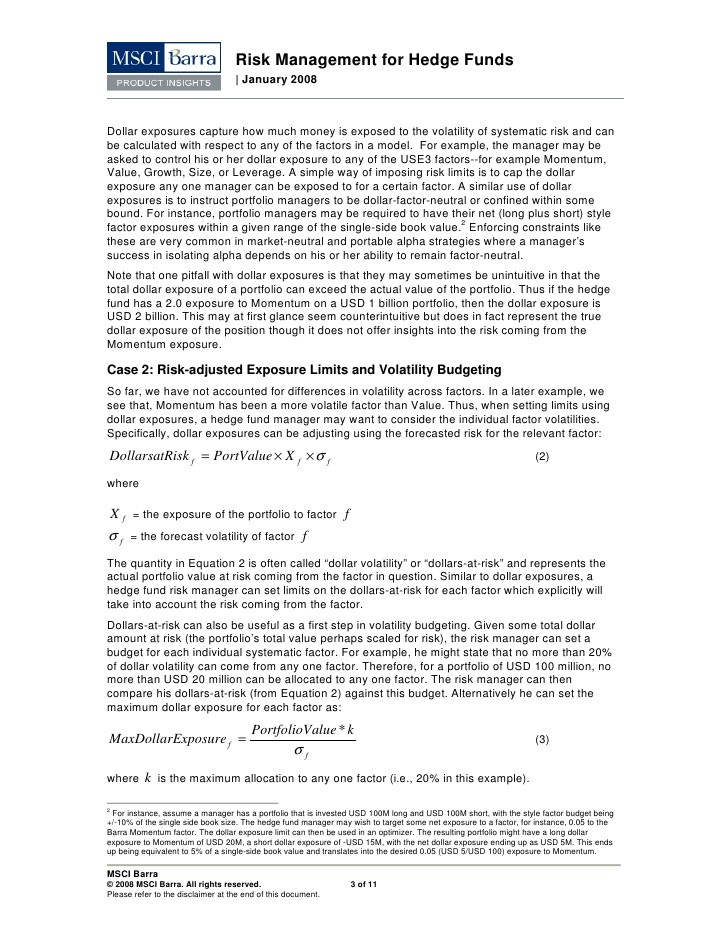The Systemic Risk of Hedge Funds
Post on: 9 Июнь, 2015 No Comment

Al Lewis Finds a New Study Showing How Hedge Funds Threaten the Financial System
The Wall Street Journal
April 19, 2014 9:25 p.m. ET
It’s ridiculous to expect the Federal Reserve to understand what caused a financial collapse that it didn’t see coming, but nearly six years later our central bank is finally getting a clue.
More important than commercial banks or investment banks, hedge funds may be the most important transmitters of shocks during crises, according to the latest Economic Letter from the Federal Reserve Bank of San Francisco.
The newsletter, written by Reint Gropp, professor of finance at Goethe University in Frankfurt and a visiting scholar at the San Francisco Fed, says hedge funds may amplify systemic risk more than previously thought.
It’s hard to believe anyone writing for the Fed is just now coming to this conclusion. In 1998, the Fed’s then-chairman Alan Greenspan organized a bailout of a hedge fund called Long-Term Capital Management because its highly leveraged portfolio threatened to take down the world economy.
That hedge funds were drivers of the financial collapse is an obvious conclusion. They created insatiable demand for the mortgage-backed securities that blew the housing bubble, and little has been done to regulate them. It was the 2007 collapse of two Bear Stearns hedge funds that presaged the financial crisis.
Hedge funds are glorified mutual funds for the rich. They charge exorbitant fees, generally taking 2% of assets invested and 20% of any profits each year. The great ones outperform the market for a time, but are destined to hit patches of underperformance. The mediocre ones often shut down quietly in the night.
Sometimes their investment strategies involve illegal insider trading, as with SAC Capital or Galleon Group. Sometimes they’re Ponzi schemes, or feeder funds to Ponzi schemes, like Gabriel Capital, which was run by former GMAC Chairman J. Ezra Merkin, who funneled billions into Bernie Madoff’s funds.
Lately, even legitimate hedge funds haven’t been performing so well. As a group, they’ve lagged behind the S&P 500 for the past five years, according to the Bloomberg Hedge Funds Aggregate Index.
Hedge funds go unregulated because regulators figure rich investors ought to know better. But clearly, they don’t.
Hedge-fund managers can often attract billions with just a year or two of outsize returns. To get these bigger returns, they take on bigger risks. When they get lucky, more money flows to them. And when their funds finally blow, they may already be billionaires from collecting 2% of the assets and 20% of the profits.
It’s an entire industry built on taking other people’s money, borrowing billions more, and betting it all on some throws of the dice.
Assets invested in the hedge-fund industry are now approaching $3 trillion, yet nobody knows how hedge funds are investing at any given time. And, as the Fed letter points out, they are deeply woven into the fabric of our supposedly regulated financial system—the commercial and investment banks and insurance companies that taxpayers may have to bail out again someday.
When a hedge fund must suddenly sell billions in assets to cover a loan or a margin call, it can set off a damaging chain reaction. The sale of those assets increases the supply on the market, which drives prices lower, the Fed letter explains. This in turn leads to more margin calls on other financial institutions, creating a downward spiral.
Hedge funds are so named partly because they’re supposed to hedge against systemic financial calamity. Instead, as the Fed letter warns, they cause them.
Al Lewis is a columnist based in Denver. He blogs at tellittoal.com; his email address is al.lewis@tellittoal.com














